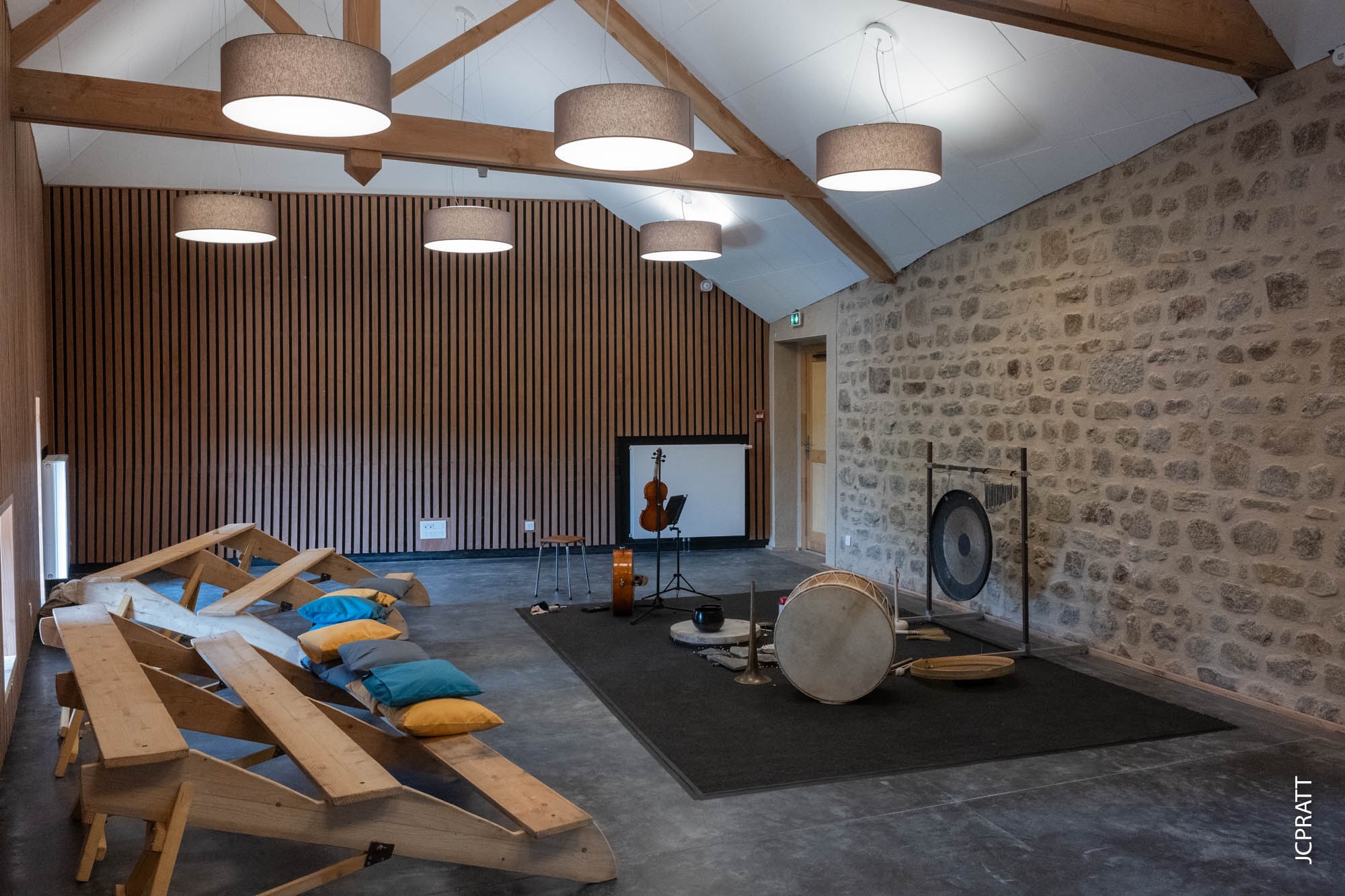photo © JC Pratt
« Atelier de musique » dédié aux pratiques sonores contemporaines
Depuis plus de dix ans, l’association Ryoanji fondée par les deux musiciens Lê Quan Ninh et Martine Altenburger déploie depuis la Creuse, un projet artistique et culturel dédié à la création sonore et musicale et à l’écoute de notre rapport au monde.
Ce projet a donné lieu à des rendez-vous et des projets initiés sur le territoire – concerts, ateliers d’éducation artistique et culturelle, rencontres, etc – ainsi qu’au festival créé en 2013, Le Bruit de la Musique, qui se déroule chaque année en août.
De la richesse des moments vécus, des liens qui se sont tissés, de la nécessité et de l’envie de s’ancrer et de déployer le projet encore plus fortement avec et sur le territoire, est né le désir d’un lieu : un endroit où l’on puisse chercher, fabriquer, expérimenter, créer, penser, rassembler, accueillir… sans cesser d’aller aussi et toujours à la rencontre. Un lieu de vie artistique, culturelle et sociale en relation avec son territoire.
Fruit de six années de réflexion et de co-construction, ce lieu, né de la réhabilitation d’anciens abattoirs, a été inauguré en juin 2023.
Une nouvelle aventure a commencé pour l’association sous le nom d’ «Épicentre, territoire de l’écoute» nourrie par l’ensemble]h[iatus, les complicités artistiques ainsi que les compagnonnages voués à se dessiner.
Témoignage de Guy Blondet, habitant de Jarnages, concernant le bâtiment dans les années 50
(entretien, prise de son et mixage : Lê Quan Ninh)
